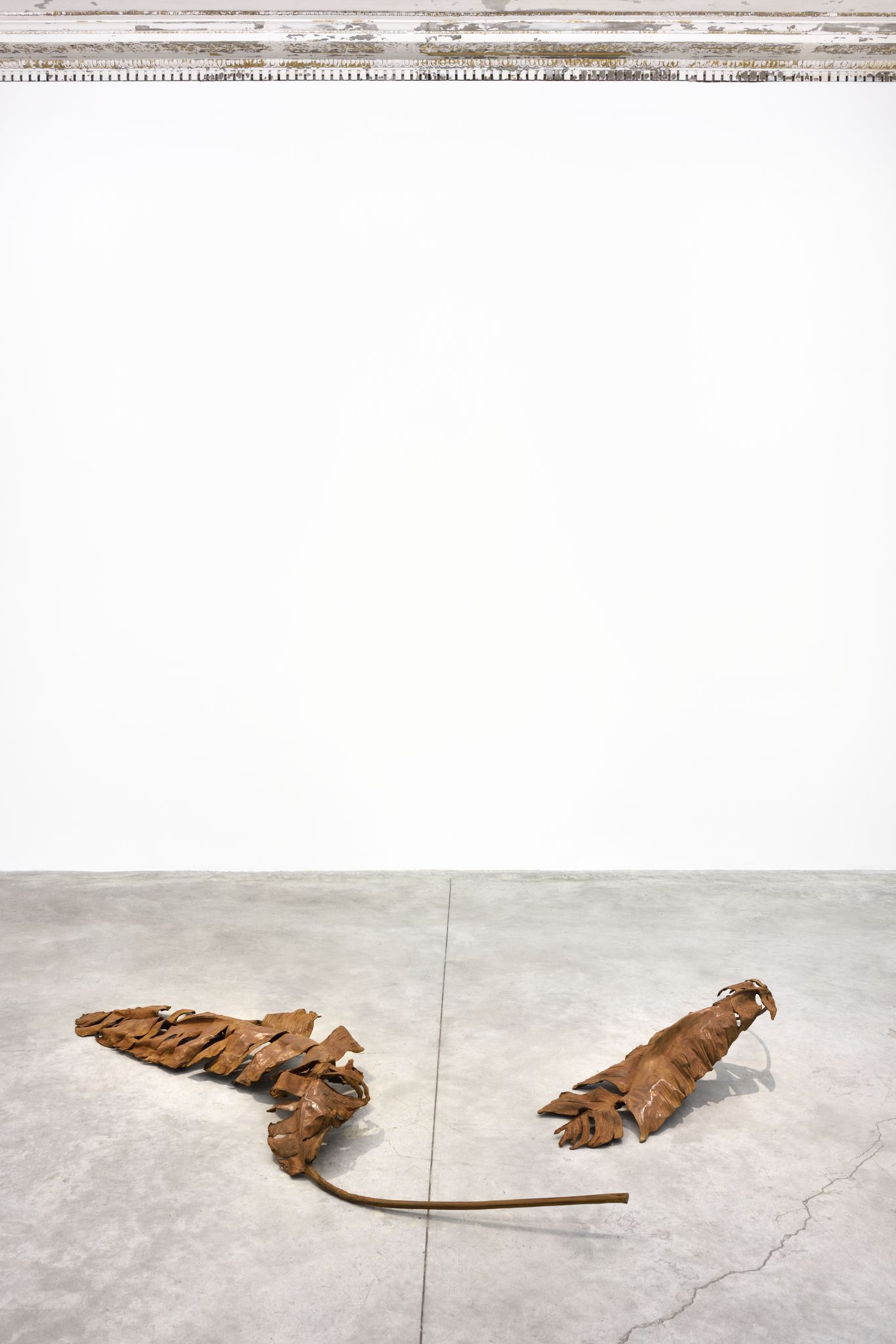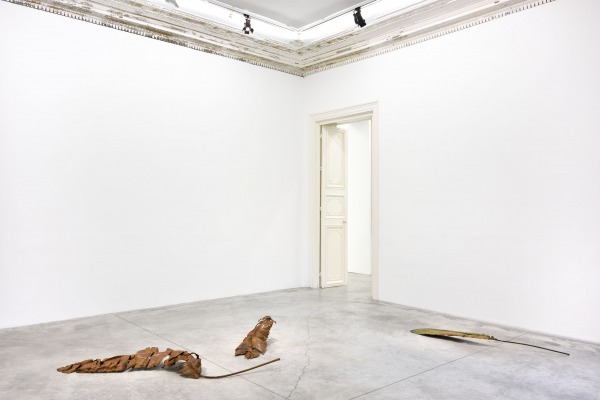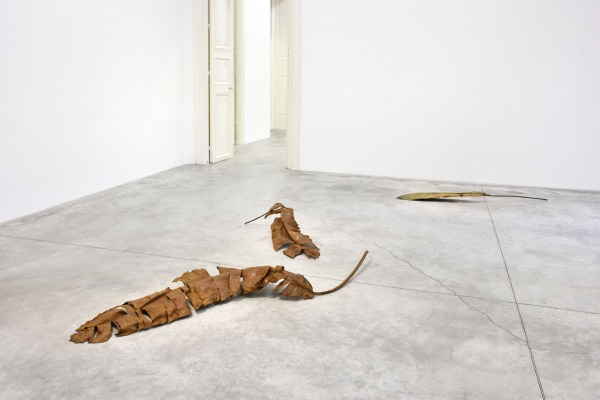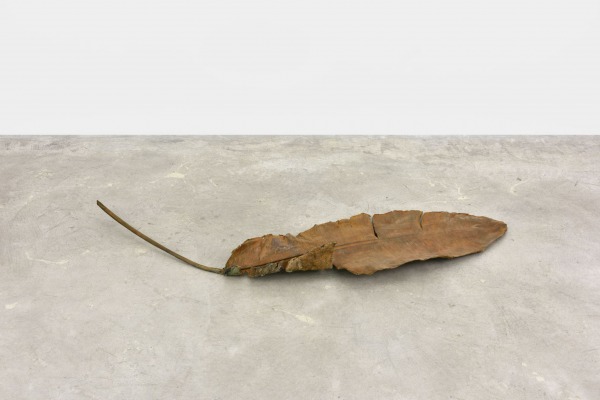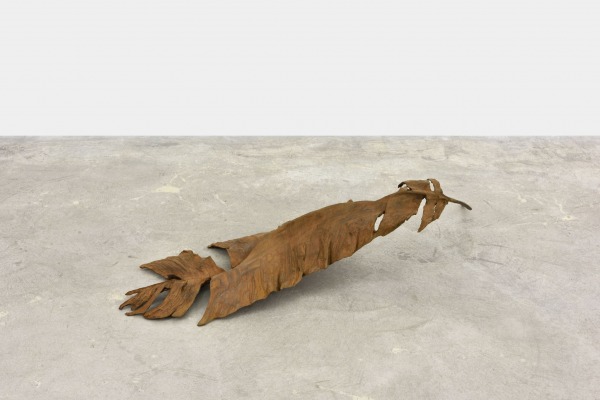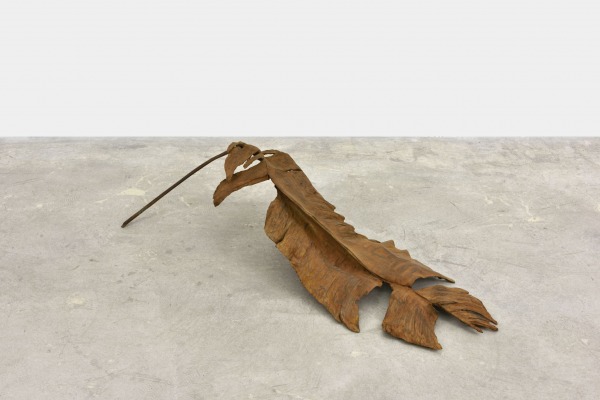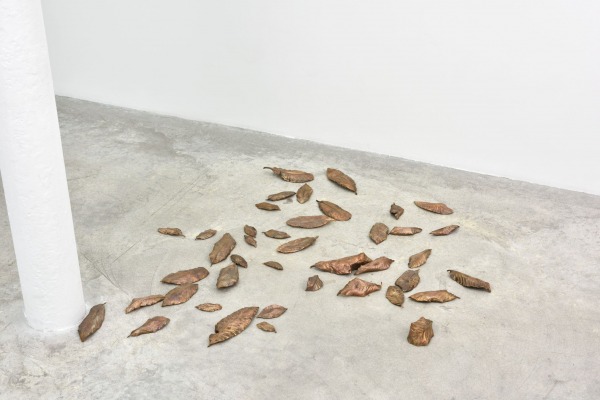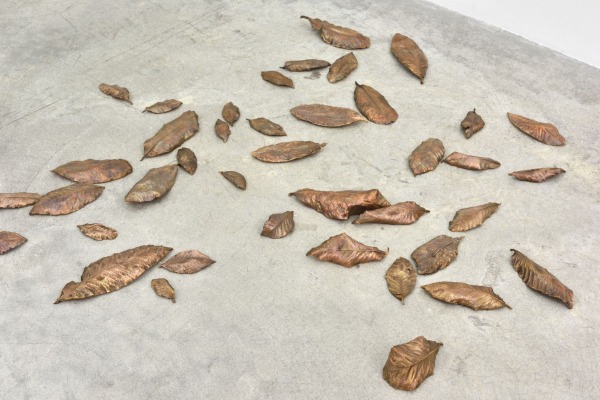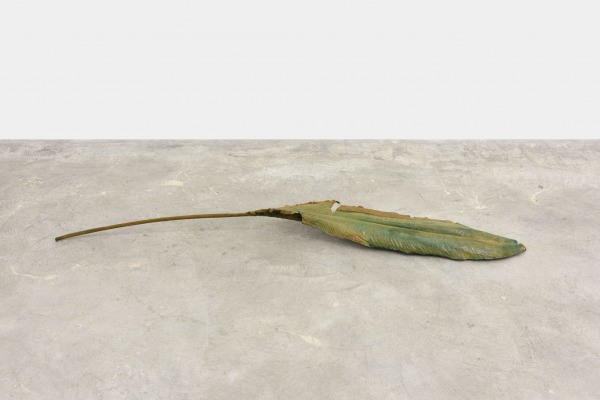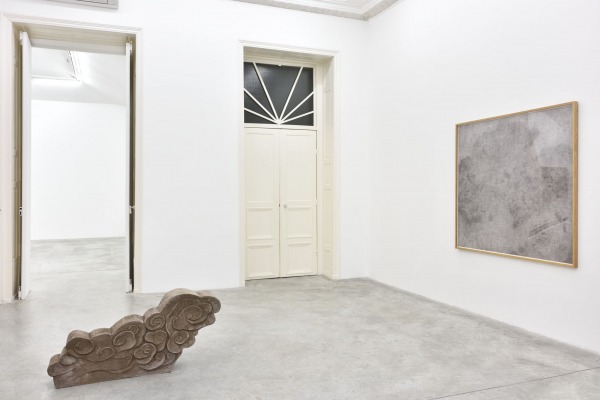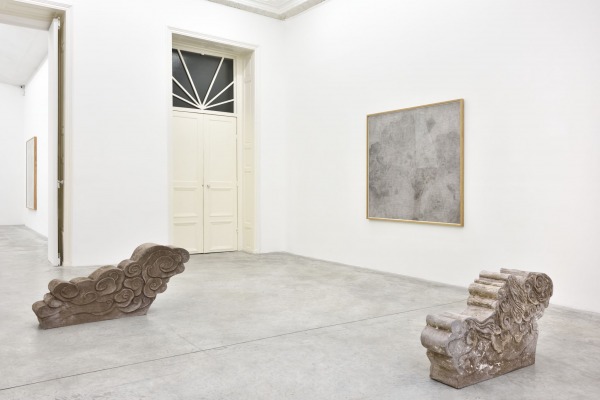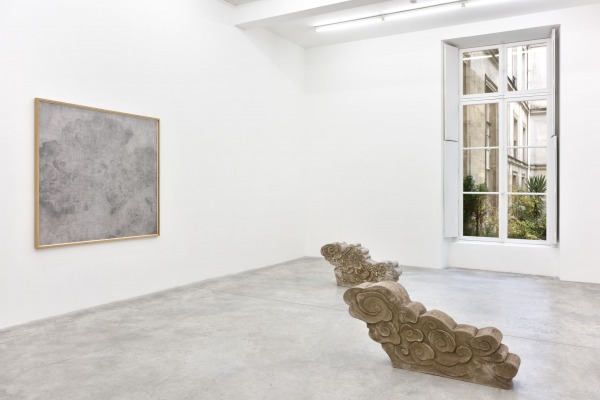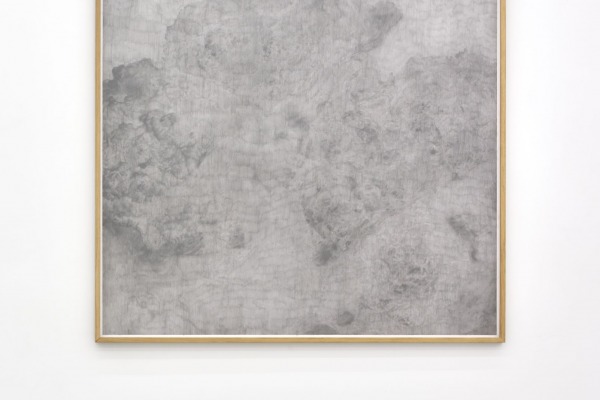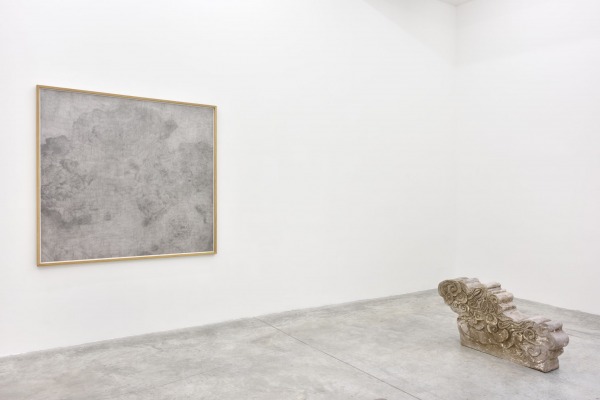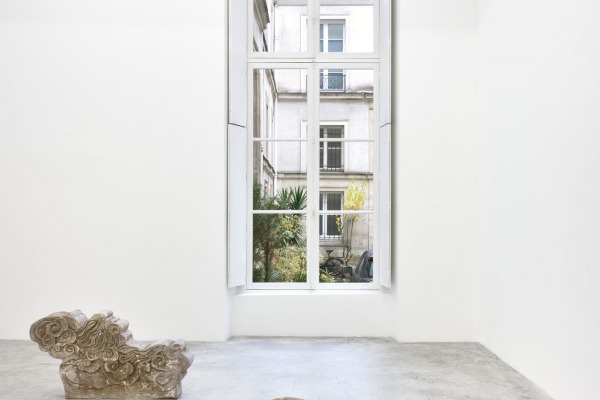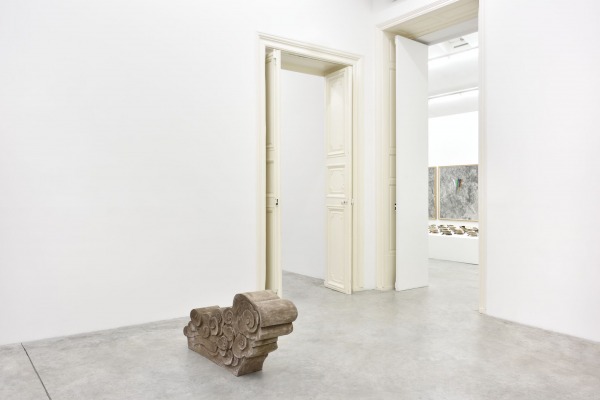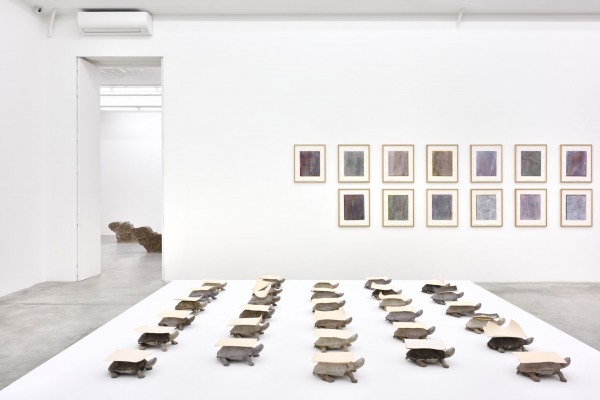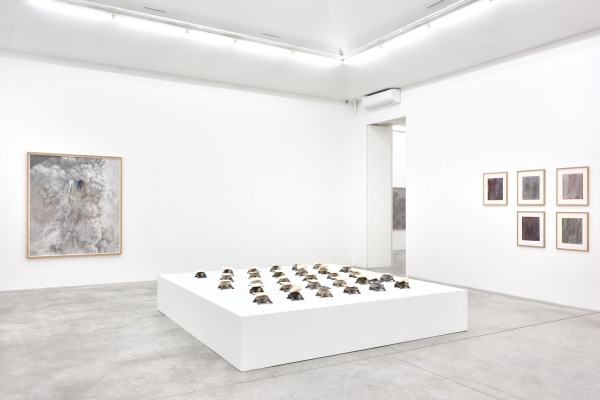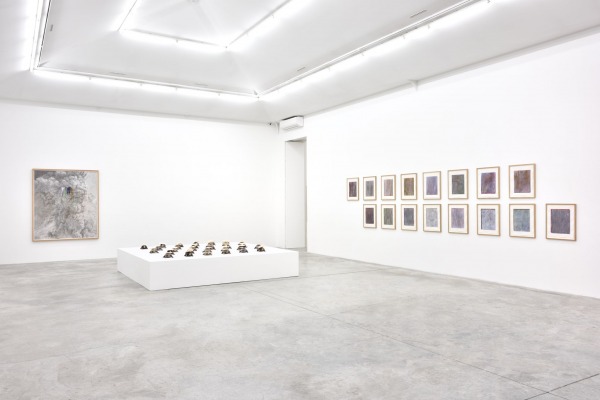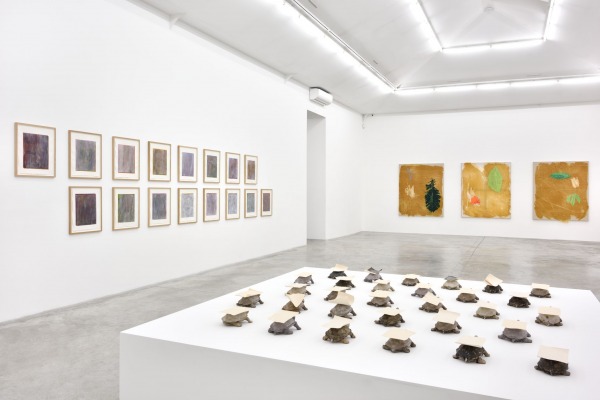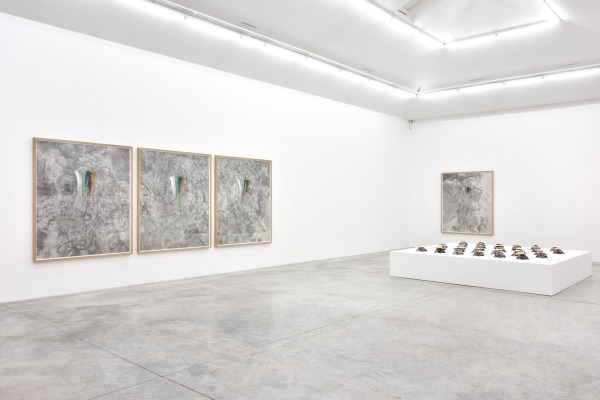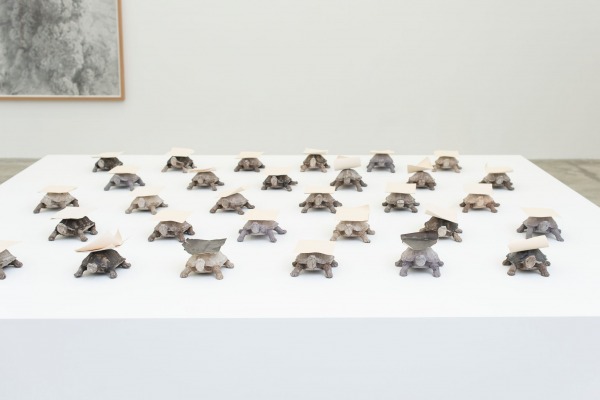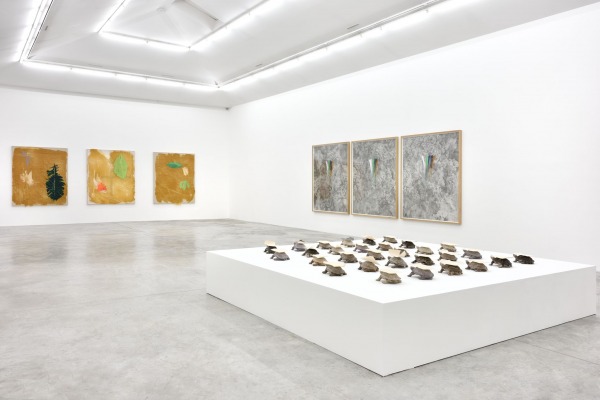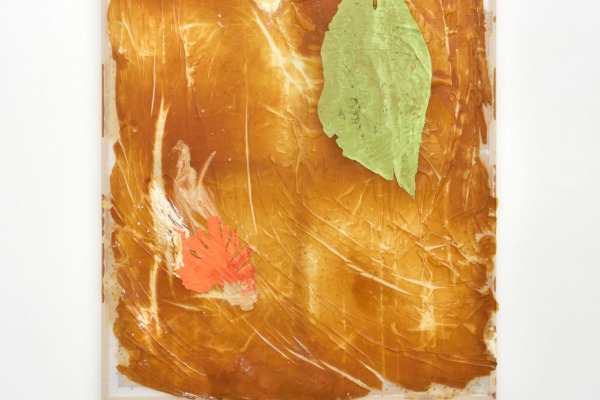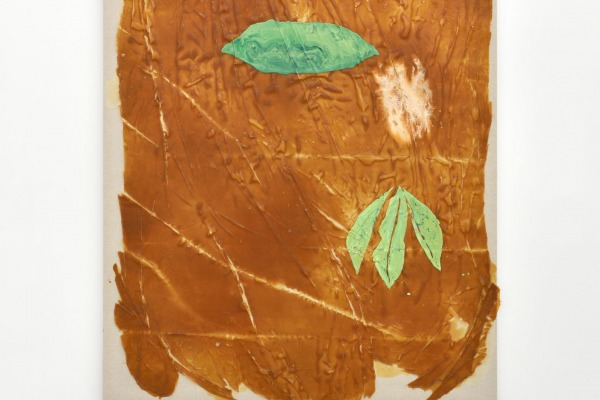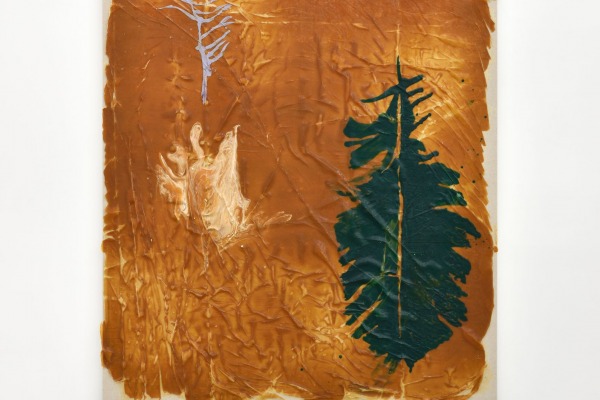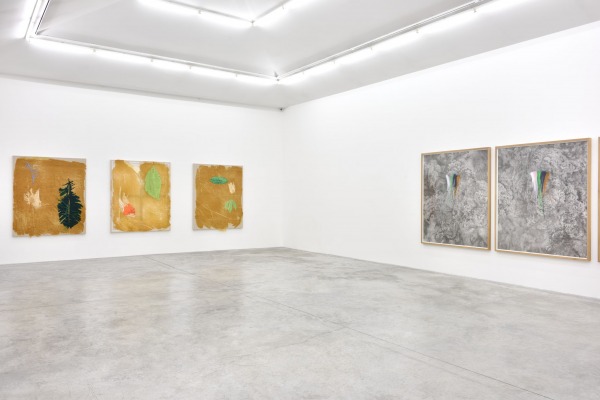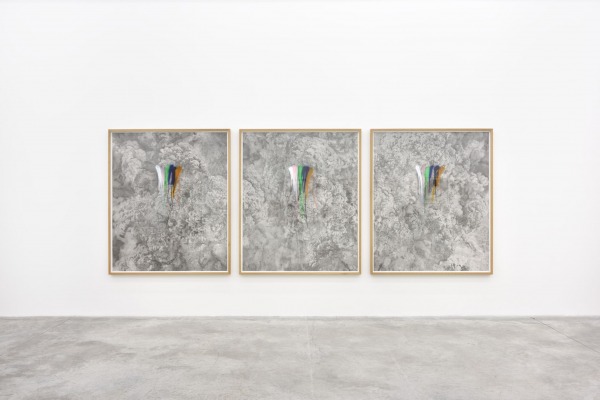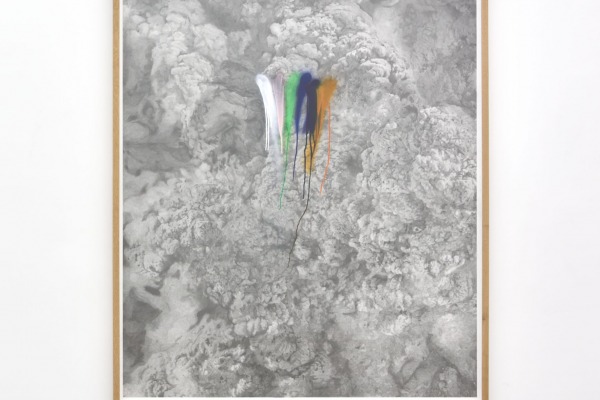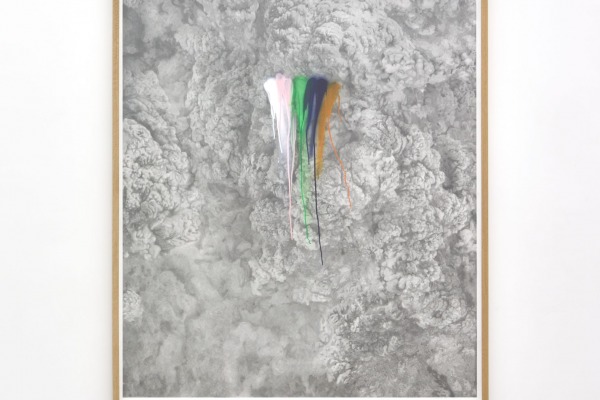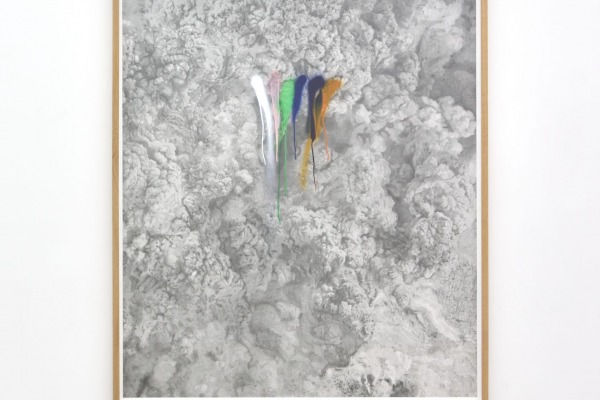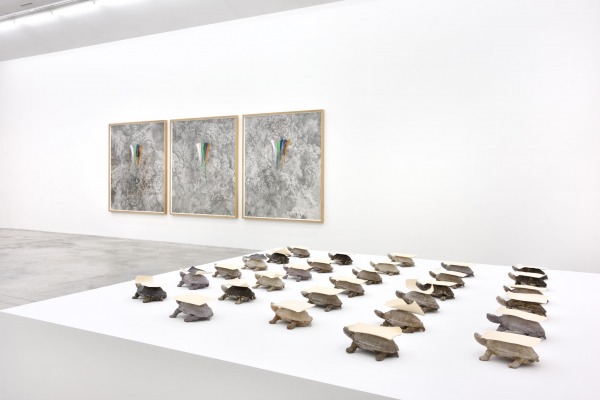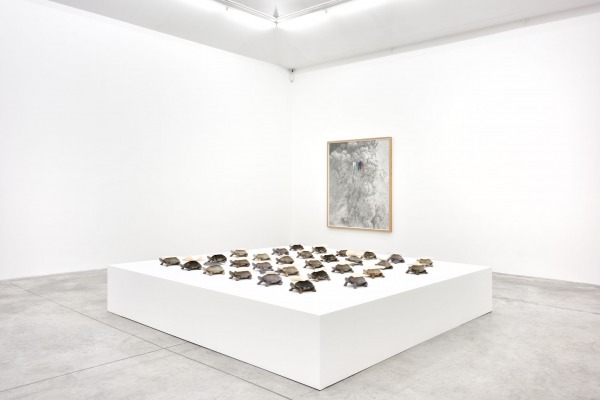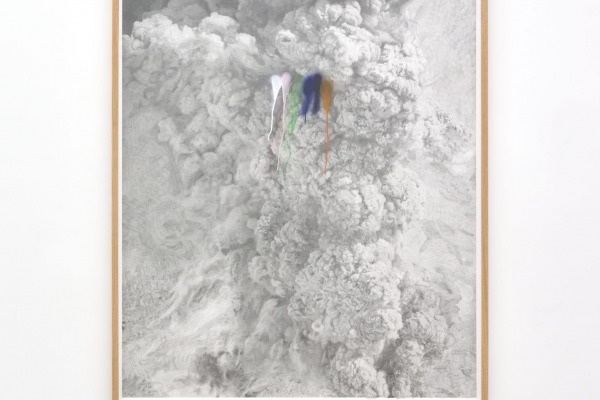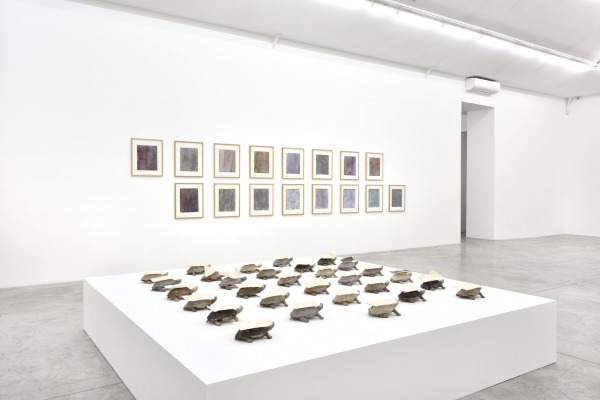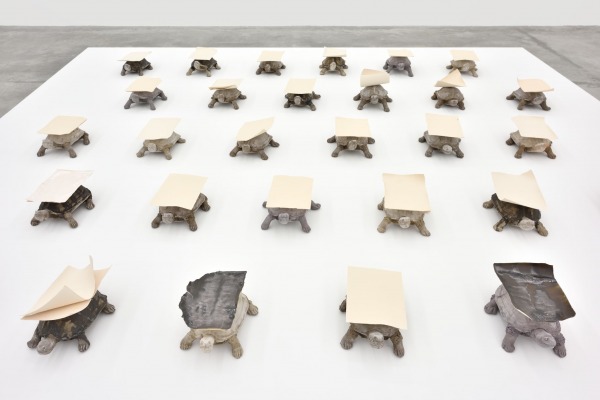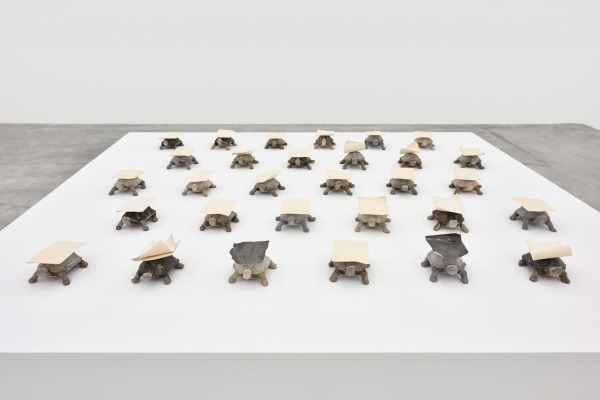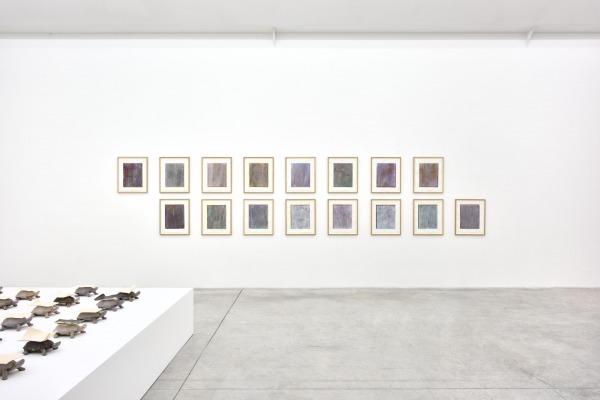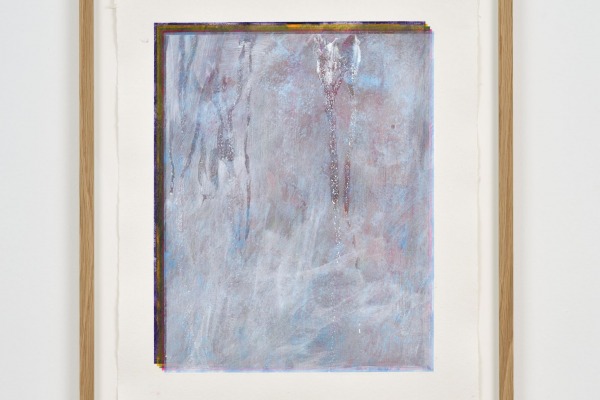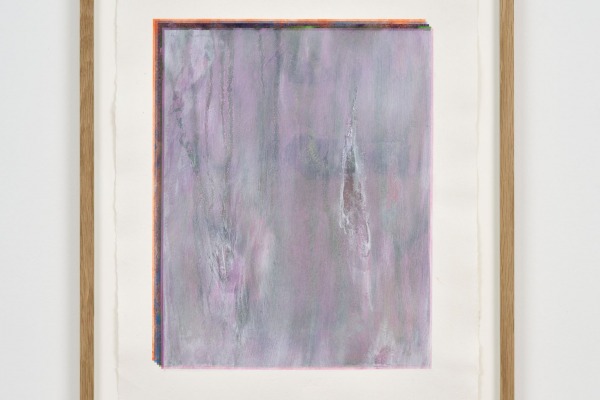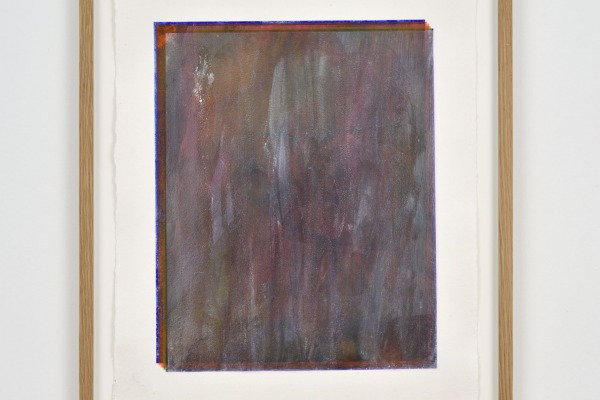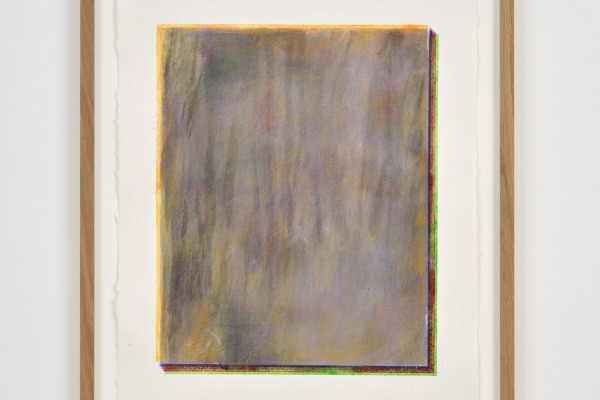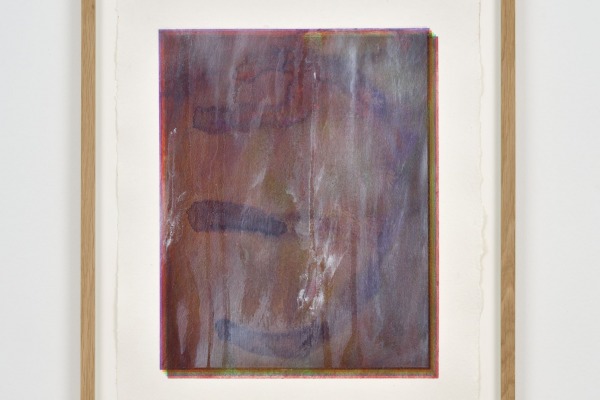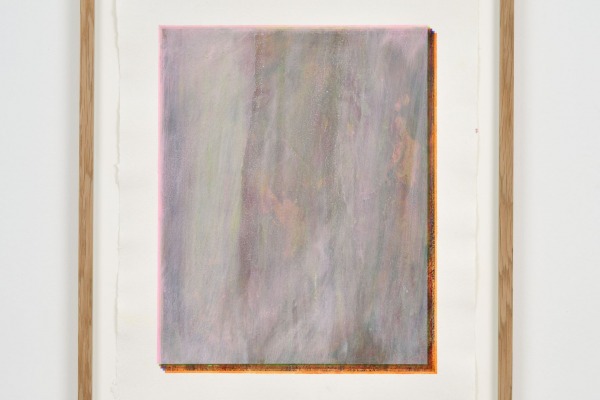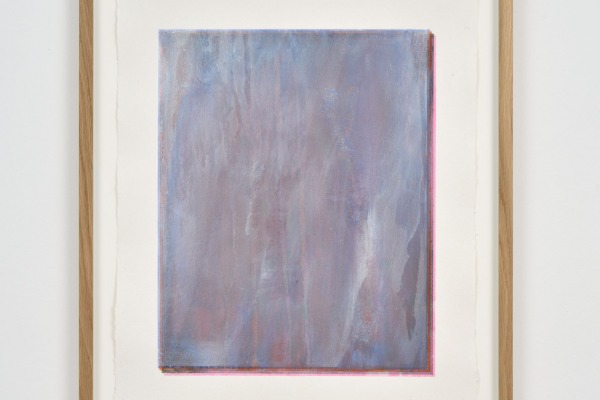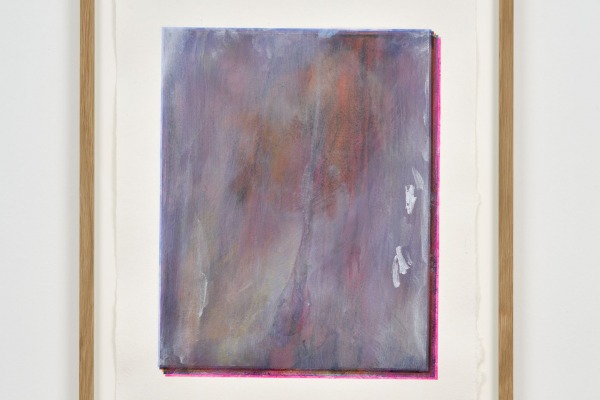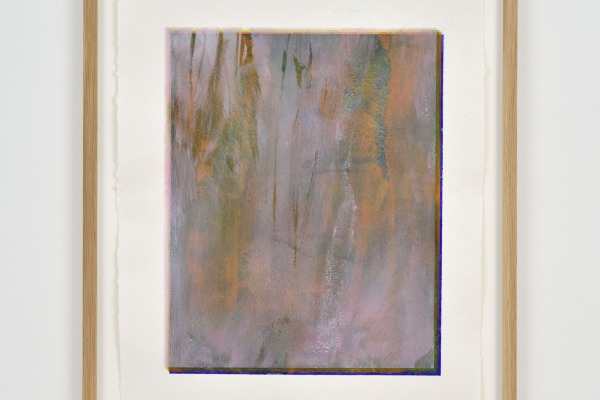Gallery Almine Rech
Paris (FR)
Trail Dust
Solo show
For her first solo show at the gallery, Thu Van Tran has chosen the double-edged title Trail Dust, which conjures up transience and evanescence but is also the code name for the toxic spraying operations carried out by the U.S. military during the Vietnam War. The transience of life and the finality of death, the transformation of organic into mineral matter and the infinite timescales of mineralization and petrification processes are the themes of Thu Van Tran’s exhibition – as are such ongoing concerns as the nature and properties of the materials constituting her art, and how these materials might address such ever-present issues as the atrocities of the recent past.
The exhibition opens with a petrified tropical forest made of bronze titled Novel Without a Name (all works 2019) [1]. The lost wax process employed to realize it necessitated the destruction of the original leaves by the molten bronze, thereby reenacting the cycle of life and death. The same applies to the forest’s individual elements: a green banana leaf symbolizing the lush plantations of Vietnam has been placed alongside brown withered specimens that have fallen to the ground. Like the bronze rubber tree leaves scattered on the floor, they remind us that bronze is not just a sculptural medium but also a copper alloy and a raw material that, like rubber, underwent long and violent processes of extraction and exploitation.
Whereas the first room represents the earth, the second symbolizes the sky.The clusters of grey ceramic clouds inspired by the steps of Buddhist temples, an ancestral symbol of elevation leading to knowledge, appear naive and unsophisticated yet are nonetheless imposing. Titled Holding Up the Immaterial, the work testifies to the sheer weight and importance of immaterial phenomena such as thought, knowledge, imagination and poetry. It stands in stark contrast to Trail Dust, a graphite drawing of dust clouds that have been covered over with hatching lines, as if to erase the memory of the destruction to which its title refers.
Evoking a space for thought and reflection beyond the limitations of earth and sky, the last room ponders the relation between words and meaning. Rainbow Herbicides, a series of drawings from which gush small multi-coloured spurts of paint, is an oxymoronic term that glosses over the herbicides’ deleterious effects [2], a work that turns the page on the misrepresentations of the past. The dreamlike installation At a Tortoise’s Pace is a group of thirty-odd petrified grey terracotta tortoises referencing the stele-bearing stone tortoises preserved in the Temple of Literature in Hanoi: each terracotta tortoise has a blank white ceramic page mounted on its shell, a repository for fresh, untainted knowledge that has yet to be conceived.
Finally, the Penetrable triptych consists of three rubber paintings bearing coloured motifs: these allegories of tropical, primitive nature reflect the artist’s interest not only in the history of materials but also in their texture, beauty and sensuality – and consequently in the senses that enable us to see and feel. This is a history of materials that unfolds sensorially: indeed, for Thu Van Tran, it is the encounter between signs, meaning and ideas on the one hand, and materials that are seen and felt on the other, that gives language its potency and brings the work of art to life.
Rahma Khazam
[1] A reference to Duong Thu Huong's eponymous book Novel Without a Name (1991), which recounts a soldier's solitary trek though the jungles of Vietnam.
[2] The term 'Rainbow Herbicides' designates the colour-coded herbicides such as Agent Orange used by the U.S. military during the Vietnam War.
